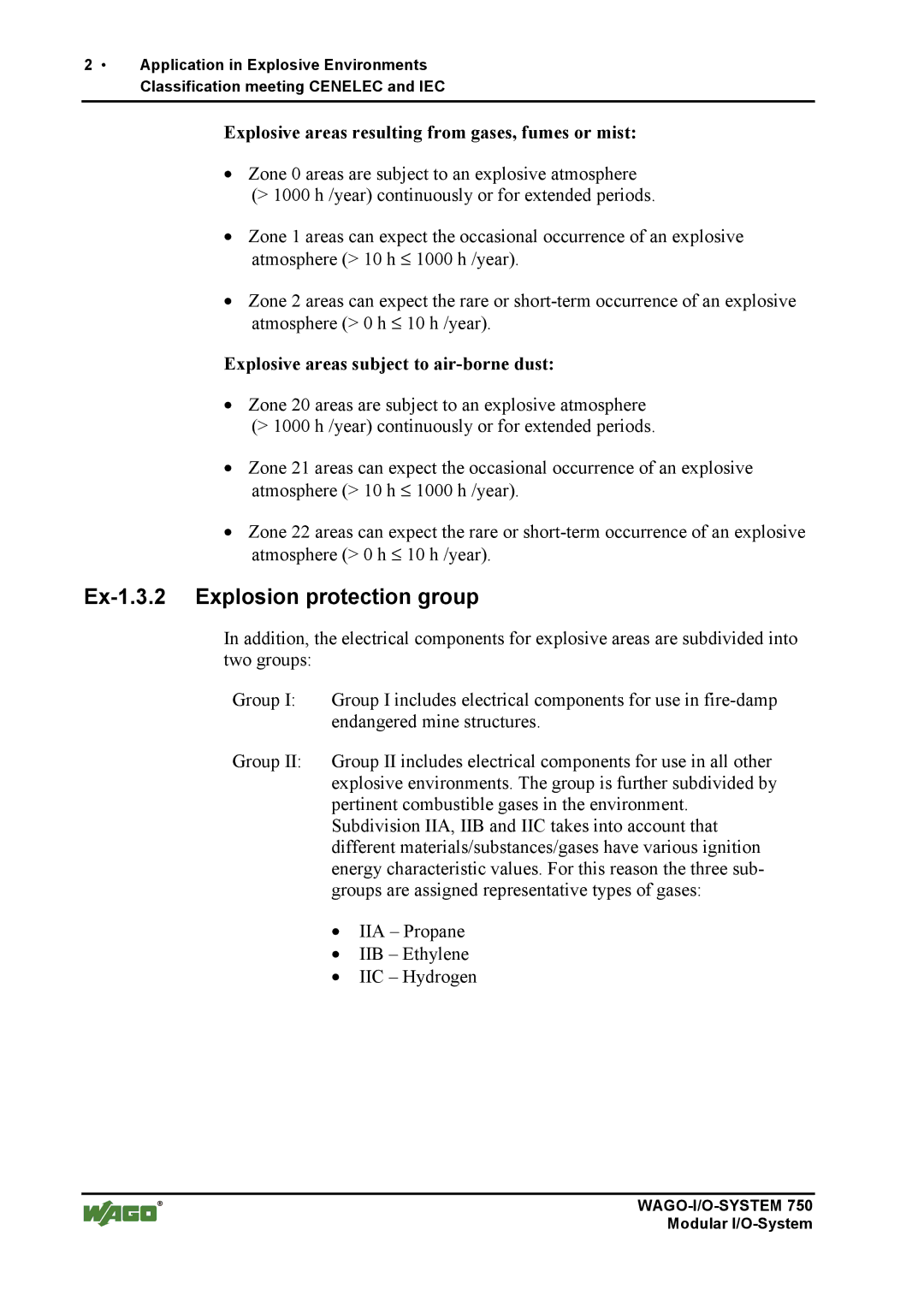
2 • Application in Explosive Environments
Classification meeting CENELEC and IEC
Explosive areas resulting from gases, fumes or mist:
•Zone 0 areas are subject to an explosive atmosphere (> 1000 h /year) continuously or for extended periods.
•Zone 1 areas can expect the occasional occurrence of an explosive atmosphere (> 10 h ≤ 1000 h /year).
•Zone 2 areas can expect the rare or
Explosive areas subject to air-borne dust:
•Zone 20 areas are subject to an explosive atmosphere (> 1000 h /year) continuously or for extended periods.
•Zone 21 areas can expect the occasional occurrence of an explosive atmosphere (> 10 h ≤ 1000 h /year).
•Zone 22 areas can expect the rare or
Ex-1.3.2 Explosion protection group
In addition, the electrical components for explosive areas are subdivided into two groups:
Group I: Group I includes electrical components for use in
Group II: Group II includes electrical components for use in all other explosive environments. The group is further subdivided by pertinent combustible gases in the environment.
Subdivision IIA, IIB and IIC takes into account that different materials/substances/gases have various ignition energy characteristic values. For this reason the three sub- groups are assigned representative types of gases:
•IIA – Propane
•IIB – Ethylene
•IIC – Hydrogen
